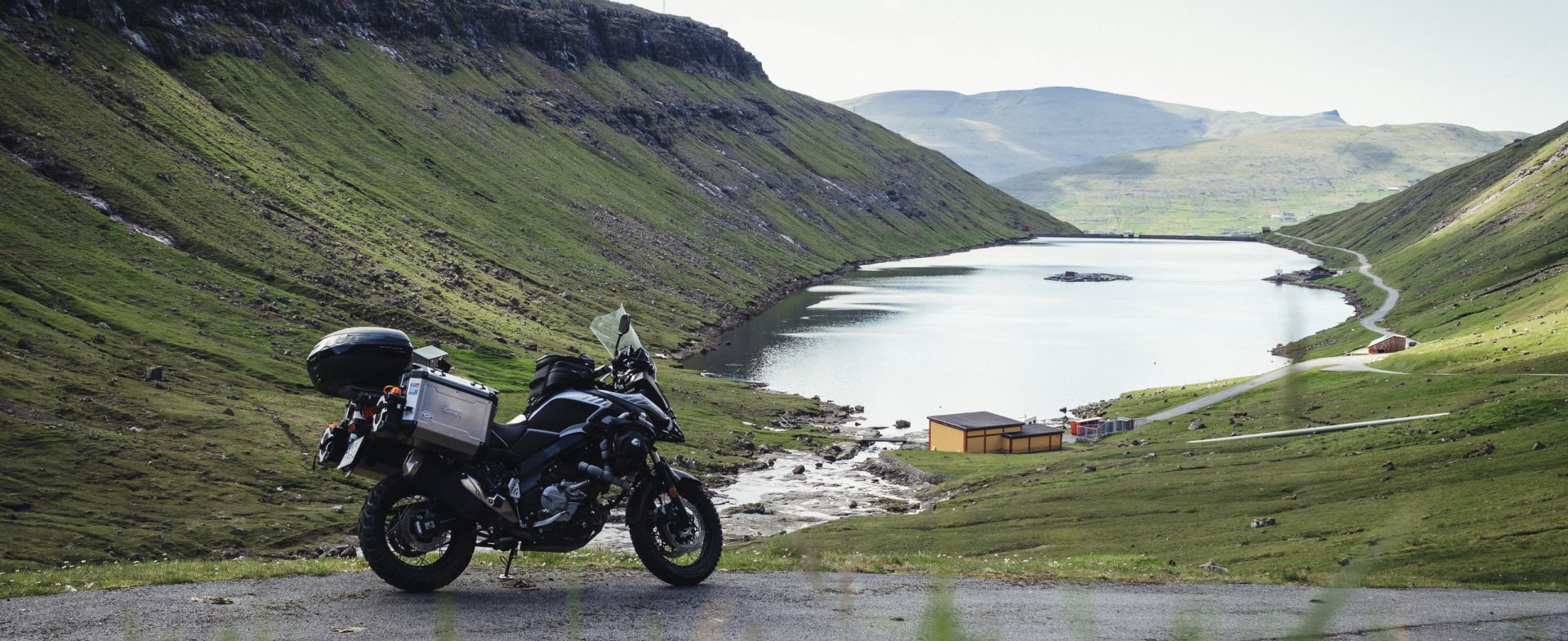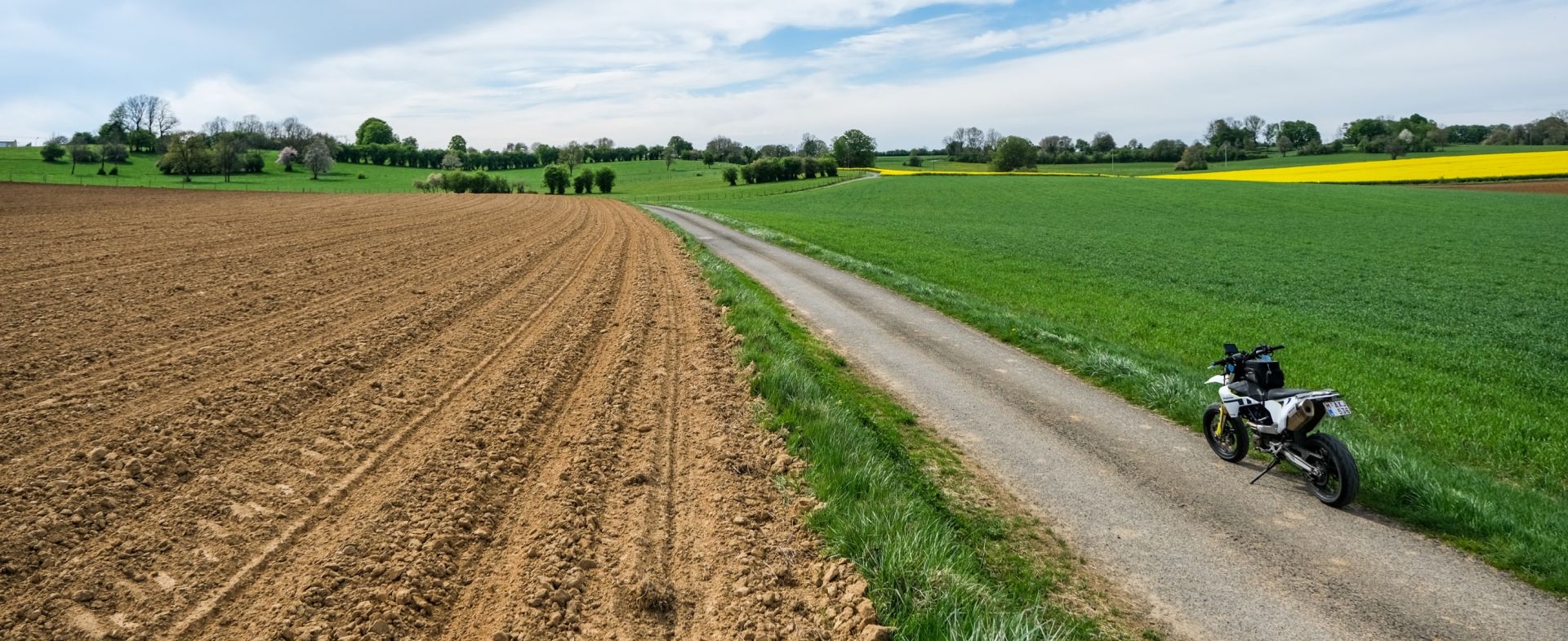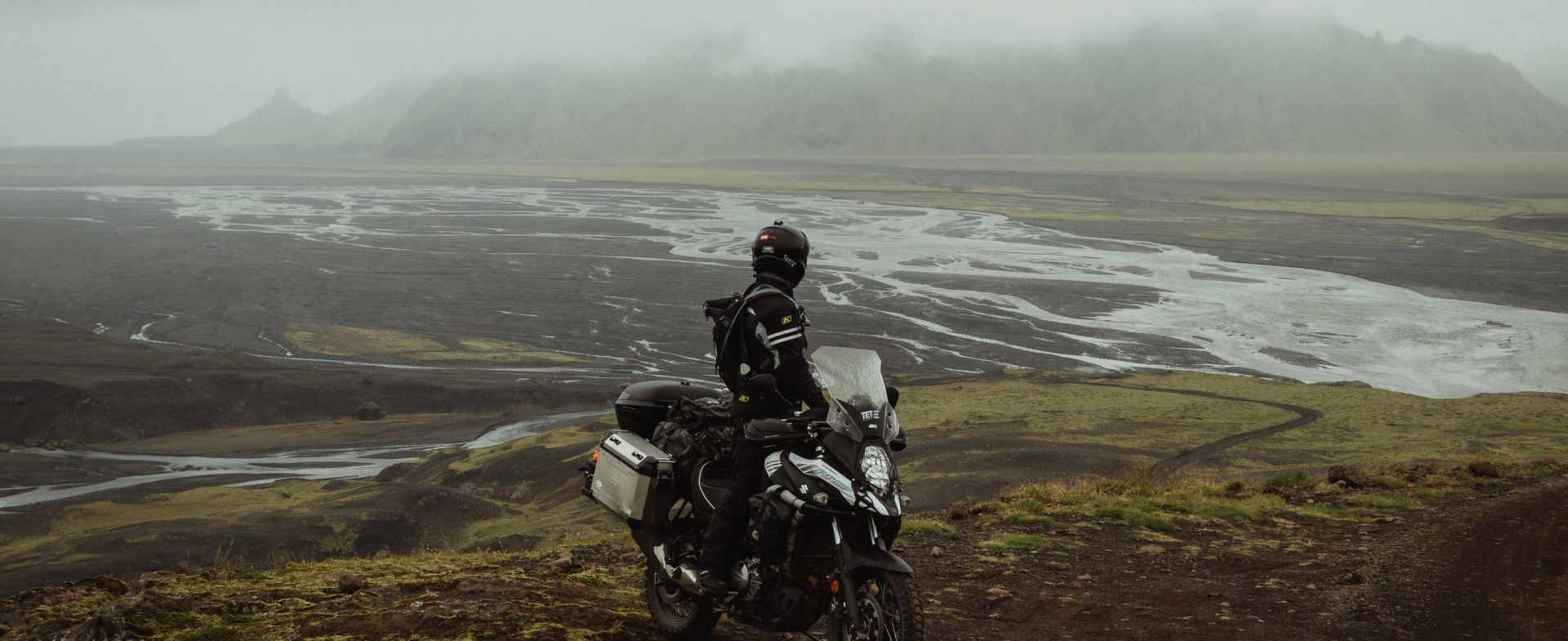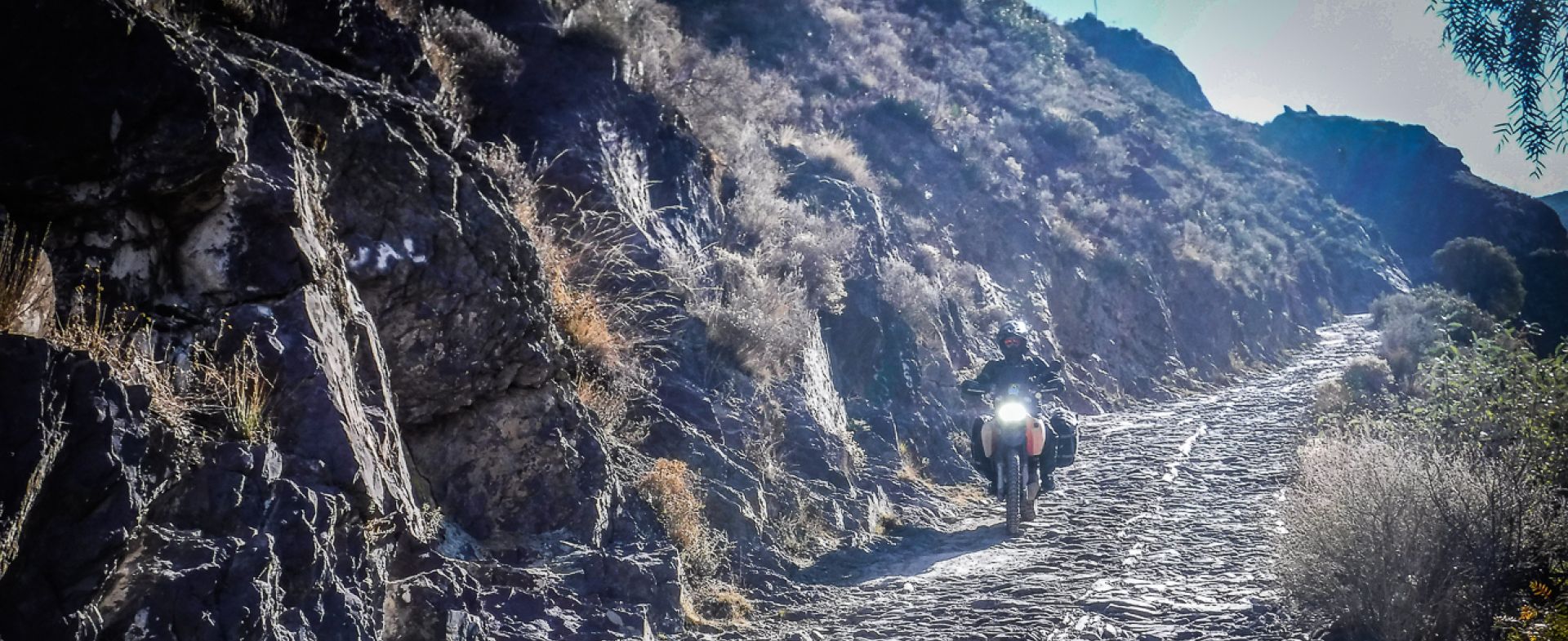Iceland has always been near the top of my travel dreams. And, naturally, I wouldn’t even think of travelling around the endless lands of ice and fire on anything other than a motorcycle. So I took the plunge and bought a ferry ticket from Denmark to Iceland six months before leaving, for 600 EUR – after that, there’d be no turning back. It also gave me time to prepare myself physically, mentally and financially: the plan is to spend eight weeks travelling – and Iceland is far from cheap. I booked the ferry through the Smyril Line website, choosing the option of a stop-over in the Faroe Islands; I’d had the chance to visit the Faroes a year before, by car, and I knew a few scenic routes over there would be perfect for a bike ride.
The Road To Iceland
Motorcycle Diaries
'Don't drown your bike. And if you do, be sure you know how to fix it!’ – of all the advice I get before leaving to tour Iceland by bike, this is the strangest. I’m pretty sure it’s a joke...
PART 1: GETTING THERE AND THE FAROE ISLANDS
Hirtshals
The boat to the Faroes, and Iceland, sails from the port of Hirtshals, in Denmark. I reach the town’s outskirts at around 6pm and it’s pretty chilly, just 15°C, but I can taste the crisp, salty air. The campsite is in the western part of town, close to the sea. I set up my tent, ride to the supermarket to buy some food, and take time to see the port and the town centre. I have a beer and scrambled eggs for dinner, then hit the hay for an early night. It’s still light outside at 10pm, but I want to be up early, before 7am.
Next morning I manage to be fully packed by around 7:30am, and leave the campsite soon after – the ferry from Hirtshals sets sail at noon, but I like being up early for a trip, and I want more time to have a look around the area. A few kilometres southwest of the town I find an entrance to a beach – I take the chance for a ride along the coast, wheels cutting through the swash as the waves lap against the shore.
Norröna ferry
After an hour of playing in the sand and saltwater, I really need to wash the brine off the bike. I ride to a car wash and try to clean it as much as I can. At the gas station I buy some engine oil as backup – you never know – then head to the ferry terminal. I’m the first one in the motorcycle queue. When the crew signals us all to move, we slide aboard the Norröna and park in the bike-dedicated bays. Securing the bikes down with tension straps so they stay upright during the crossing isn’t an easy job; my ratchet jams, and one of the crew gives me a hand.
The cruise to Tórshavn, the capital of the Faroe Islands, takes 36 hours. I lay out my sleeping bag, lock the rest of my luggage in a locker, and go exploring to see what points of interest the colossal, 165 metre ferry has.
The Norröna has 9 decks; two are parking decks, one of which is a double-storey. The boat also has a gym, swimming pool, sauna, jacuzzi, games arcade, grocery store plus restaurants, cafes, pubs, playgrounds, a helipad and even a cinema – it’ll be hard to get bored, even on a long cruise.
After dinner I have a stretch at the gym, but the ferry’s rocking gives me a headache so I go to bed. As I lie awake during the night, a storm tosses the ferry around quite a bit. There are weird cracking noises coming from the lower decks, and it sounds like we keep hitting something, but I’m just hoping it’s normal crashing into waves, and I have nothing to worry about.
Tórshavn
I wake up, somewhat shaken, at 8am, have breakfast and a morning coffee, then a try another trip to the gym and the sauna. Afterwards, I meet a few bikers on board who are also planning to tour Iceland, and we talk about the routes we are looking at. In the evening I load up my gear in the cabin and, around 9:30pm, the ferry arrives at the Tórshavn terminal. I set off towards the campsite, but I don’t even have to turn my sat nav on because I remember the way from my last time here. There are a ton of people at the campsite – it looks as if most of the ferry’s passengers are staying here.
Next morning I make scrambled eggs for breakfast (the campsite has a well equipped kitchen), brew a pot of tea for the road, and head out to ride around the area. The weather is fine and it looks like it’s going to be a nice day.
Over the next few hours I visit several of the Faroe Islands’ main points of interest.
There’s the picturesque road heading to the village of Norðradalur, on the west coast (population around 20 people). The island of Koltur can be seen in the horizon (population two people and 160 sheep). The Sornfelli plateau is the home to a meteorological station (population none, but pretty chilly). A narrow, steep road winds up to the car park, at 630m – meaning it’s the highest road in the Faroe Islands. About halfway down the road I leave the tarmac for a bit of off-roading. A herd of grazing sheep get very interested in my bike, but I fend them off. I wind up at the bottom in the village of Leynar (population 120, so practically a town). I take a brief rest at a beach, but it’s a bit chilly for swimming. I have a sandwich and relax, listening to the sound of the waves lapping against the shore. It is sheer bliss.
Vestmanna
Vestmanna is the seventh-largest town in the Faroe Islands, with more than 1200 residents. To be honest, I don’t find anything interesting here, besides it’s small harbour and rows of colourful houses. To the east of Vestmanna lie two small lakes. The road up to them is steep and narrow, and ends at a viewpoint with fabulous views. Later on I spot some curious little houses between Vestmanna and Kvívík. They look like they’re for rent; I wonder how I can get to spend the night in one of them? Then, a few moments later, an elderly Japanese man stops next to me, and proceeds to tell me his life story; he’s 79 and he moved to the Faroe Islands 40 years ago trying to find peace. He tells me how much people work back in Japan and how little they down-time they get. In the end, he gives me yogurt and some cream as a present... but nothing about the houses!
Saksun
One of the best riding roads on the islands winds through the valley between Streymnes and Saksun. It’s got a lot of corners and really good tarmac, with mountains lining both sides of the road. The only thing I have to watch out for is cars coming from the opposite direction; the road is only wide enough for one vehicle, so you need to let the others pass by pulling over into a passing bay. At least you get more time to admire the view...
In Saksun, I stop by the Heljardalsa waterfall. Last year, I walked along the beautiful Pollurin lagoon, all the way to the spot where it falls into the sea – but today it’s definitely too hot for a long walk in motorcycle gear. I sit and watch the waterfall instead.
Tjørnuvík
I head past the Fossá waterfall, and eventually reach the northernmost village on the island of Streymoy. Off in the horizon, I can see the twin basalt stacks of Risin og Kellingin (the Giant and the Witch). The Giant rises 71 metres from the sea, and the Witch is 68 meters tall. The story goes that the giants in Iceland were envious and wanted to drag the Faroe Islands back; the giant and the witch were sent to get them. But they spent so long trying to move the islands that the sun came up and turned them to stone. In reality, geologists think one of the columns will collapse in the next few years, so if you want to see them, now’s the time!
At 7:30pm I head back to Tórshavn. On the way I stop for a while again, by the Fossá waterfall, lost in the music of the water...
If you’re interested in following the story of Damian and his trip to Faroe Islands and Iceland, check out the story on our website or follow Damian direct on his site www.watraczistraveling.com
#FORYOURRIDINGPLEASUREONLY





























